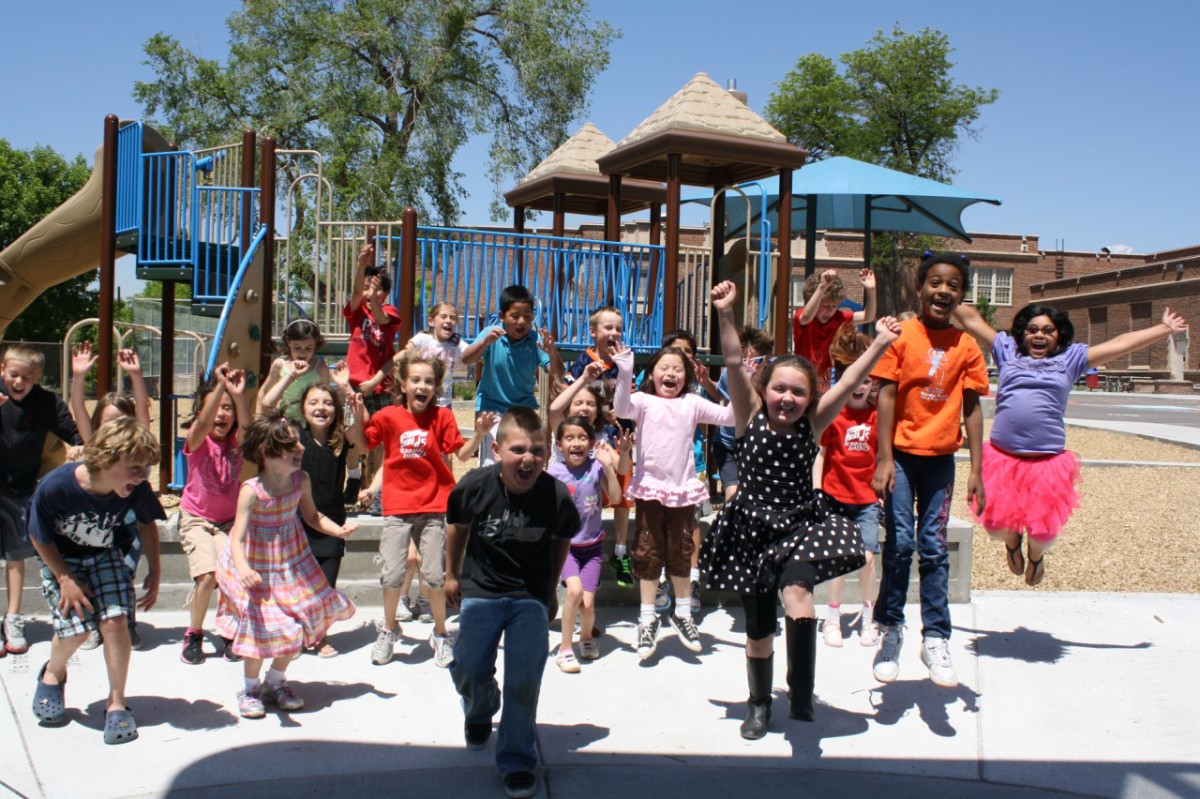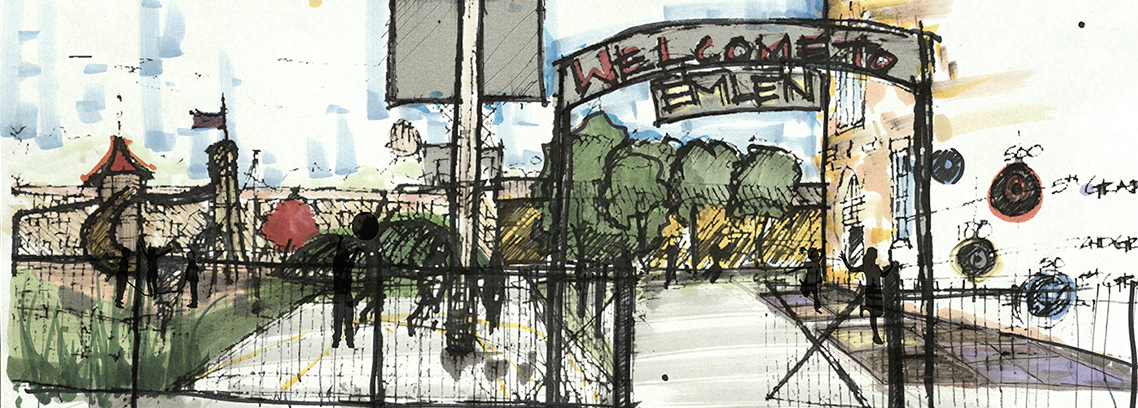
A large scale green schoolyard conversion project in Denver illustrates the benefits of green schoolyards. From 2000 to 2012, Denver Public Schools (DPS) converted 99 elementary schoolyards encompassing 306 acres to Learning Landscapes. Learning Landscapes combine natural elements, spaces for physical activity and creative play, and educational elements such as historical timelines and quotations to help children learn as they play. Distinctive features of Learning Landscapes include outdoor classroom and STEM elements, grass playing fields, vegetable gardens, and nature play and habitat areas.
In 2021, Children & Nature Network funded a statistical analysis conducted by The Big SandBox, Inc. and Autocase Economic Advisory to estimate effects of Learning Landscapes on children’s learning, environment, health and wellness, and DPS-related economic outcomes. Several small studies investigate the relationship between green schoolyards and outcomes within one domain, but the Denver study is the first to use longitudinal data from a districtwide green schoolyard conversion project in a large urban school district to estimate effects across multiple domains.

The Philly Schoolyards Exchange Program brings graduate students studying landscape architecture to Philadelphia for an immersive experience. Continue reading “Philly Schoolyards Exchange Program”

The William McKinley School is located in the lower Eastern North portion of Philadelphia.